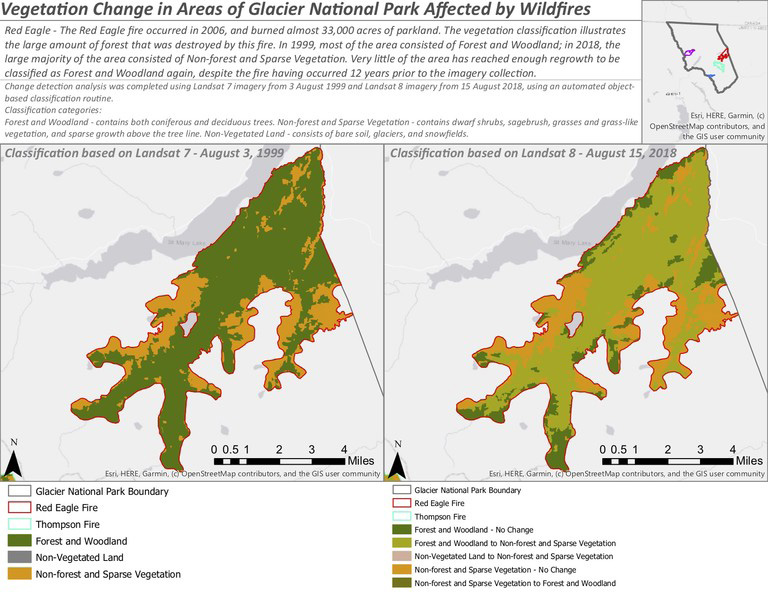
For her final project in a GEOINT class, Lauren Maloney analyzed vegetation growth patterns in areas affected by wildfires in Glacier National Park.
When Lauren Maloney trained in military intelligence with the U.S. Air Force, she was impressed by how much information could be conveyed by geospatial intelligence, which uses images and data to analyze activity in specific locations.
“We typically write reports and use a lot of words to convey a message. With GEOINT you can convey it with images, and the message is so much clearer,” said Maloney, who graduated this year with a master of professional studies in homeland security, geospatial intelligence option, offered online by the Penn State College of Earth and Mineral Sciences and Penn State World Campus. “I fell in love with the whole idea.”
Maloney recently was awarded the 2020 Lt. Michael P. Murphy Award in Geospatial Intelligence, which recognizes a student in Penn State’s geospa-tial intelligence program who has served in the U.S. armed forces or with the geospatial intelligence community, and demonstrated “exceptional contributions to the discipline.”

